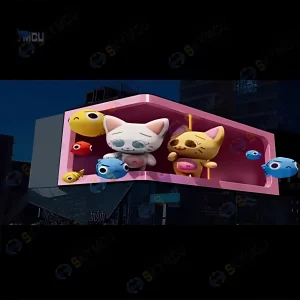In today’s fast-paced digital world, display technology is constantly evolving, pushing the boundaries of what we thought was possible. Thin film transistor liquid crystal displays this cutting-edge technology and offers a range of advantages that are unparalleled in the market. In this blog post, we will explore the remarkable benefits of LED thin film transistor liquid crystal displays and why they should be your top choice for display solutions.
The Thin Film Transistor Liquid Crystal Displays Are Ultra-Thin and Light:
Thin film transistor liquid crystal displays an ultra-thin and ultra-light design. With a thickness of mere millimeters, this screen is significantly thinner than traditional displays. Its lightweight nature enables easy installation and makes it ideal for applications where weight and space constraints are crucial considerations. Whether you need to mount it on a wall or integrate it into a mobile device, this thin and lightweight screen ensures effortless incorporation into any environment.
The LED Thin Film Transistor Liquid Crystal Displays Provide High Permeability:
One of the standout features of the LED thin film transistor liquid crystal display is its high permeability. Unlike conventional displays that directionally emit light, this technology enables light to pass through the screen more diffusely. The result is enhanced visibility and reduced glare, ensuring optimal viewing experiences from a wider range of angles. Whether you’re indoors or outdoors, the high permeability of this screen guarantees excellent image quality and clarity.
The LED Display Provides High Brightness and High Refresh:
The LED thin film transistor liquid crystal display employs static drive technology, which ensures a high refresh rate and brightness. Static drive eliminates the flickering effect commonly associated with conventional displays, resulting in a smooth motion and improved image quality. Additionally, the high brightness capability of this technology guarantees vivid and vibrant visuals, even in brightly lit environments. Whether you’re showcasing dynamic content or static images, an LED thin crystal film screen delivers an exceptional visual experience.

The Thin Film Transistor Liquid Crystal Displays Are Easy to Install:
Has prioritized user convenience by designing the LED thin crystal film screen for easy installation. The lightweight construction and flexible nature of the display simplify the installation process, minimizing both the time and effort required. Furthermore, the display can be easily mounted using various methods, including adhesive backing or magnetic fasteners, ensuring a hassle-free setup process. With its user-friendly installation, businesses and organizations can quickly deploy stunning displays to captivate their audiences without unnecessary delays.
The LED Displays Are Bendable and Flexible:
Flexibility is a key advantage offered by LED thin film transistor liquid crystal display. This remarkable technology can be bent and curved to fit various surfaces, allowing for creative and innovative display installations. From curved walls to cylindrical structures, the flexible nature of this screen empowers designers and architects to unleash their creativity and create visually stunning environments. With the ability to adapt to unique shapes and sizes, the possibilities for immersive and engaging displays are endless.
Available Sizes:
LED thin crystal film screens can be seamlessly joined together to create larger displays without visible seams or bezels. This feature ensures a truly immersive visual experience by eliminating distractions and presenting a cohesive image across the entire display area. Whether you require a small-scale display or a massive video wall, this technology can scale to meet your needs, making it suitable for a wide range of applications, including retail, entertainment, and public spaces.
The LED Display Offers Intermittent Transmission:
The LED thin film transistor liquid crystal display is designed to save the structure and enable intermittent transmission. Its flexible nature allows it to be seamlessly integrated into existing architectural structures without needing an additional framework.
